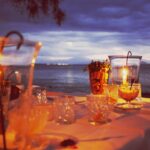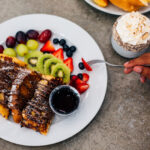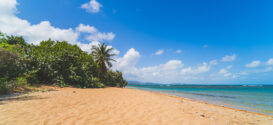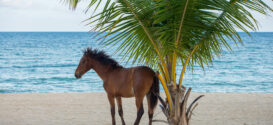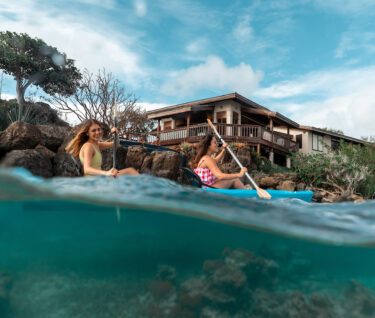
Water Sports in Puerto Rico
Facing the Atlantic Ocean and Caribbean Sea, Puerto Rico’s breathtaking coastline is a magnet for water sports enthusiasts.
Puerto Rico packs a thrilling diversity of water sports adventures into a small and accessible area. Opportunities for surfing and kayaking abound at San Juan’s beaches while the clear, calm waters of Condado’s centerpiece lagoon provide the perfect setting to try stand-up paddleboarding (SUP). Idyllic islands, protected marine reserves and extensive coral reefs—teeming with marine life—lure snorkelers and divers to some of the most revered sites in the Caribbean. And, for the crowning achievement—kayaking through one of Puerto Rico’s three bioluminescent bays should not be missed.
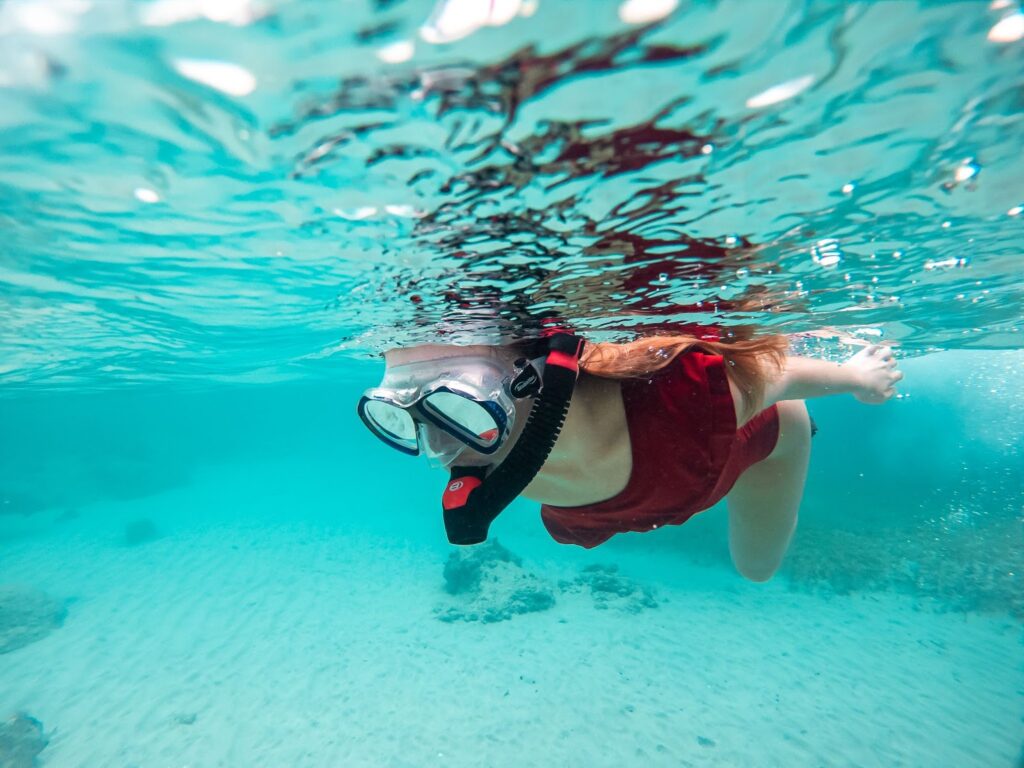
Snorkeling
From the mangrove-laced Gilligan’s island to the protected waters of La Parguera, Puerto Rico offers an underwater experience for every age and skill set. Snorkelers and divers can explore kaleidoscopic coral reefs, epic sea walls, 100-ft. (30-m) trenches and “swim through” caves that provide rich habitat to a fantastical array of marine life. At reef-protected beaches, there’s rewarding snorkeling just a short swim from the shoreline. Mona Island and Desecheo Island—dubbed the “Galápagos of the Caribbean” for their rare endemic species— remain the preserve of experienced divers.
South West
Idyllic Caribbean beaches, castaway islands and calm, turquoise waters, the South West Coast is mesmerizing above and below the water. The most rewarding snorkeling and diving sites require a boat or kayak and are best explored with a recommended outfitter. La Parguera Nature Reserve—one of the most biologically diverse ecosystems in Puerto Rico—is home to thriving populations of dolphin, barracuda and turtle. The reserve’s prized site is known as “The Wall.” At over 35km (22 miles) long and with depths up to 1,500ft. (457m), this glorious expanse of coral formations and outer reef platforms supports a profusion of sea life—turtles, reef shark, barracuda, dolphin and manta ray.
In Guánica, Gilligan’s Island combines a picture-perfect Caribbean dreamscape with accessible snorkeling. Shallow, crystalline waters, healthy coral and kaleidoscopic schools of tropical fish provide a wonderful initiation into snorkeling for families.
West Coast
A winter surfing mecca, Puerto Rico’s Atlantic-facing West Coast becomes a playground for snorkelers during the calmer summer months. In Rincón, Tres Palmas Marine Reserve is one of Puerto Rico’s crown jewels, preserving all seven endangered coral species, as well as schools of angelfish, moray eel, spiny lobster, sea turtle, leatherback turtle, whale and dolphin. A short swim out from Step’s Beach, thickets of the world’s healthiest formations of rare elkhorn coral provide a rich food source for myriad fish and invertebrates.
Some 80 km (50 miles) off the West Coast, Mona Island remains the preserve of experienced divers. The live-aboard boat experience provides access to pristine, unspoiled reefs which host a dazzling cast of (normally elusive) sea life, including dolphins and humpback whales.
Desecheo Island lies 22km (14 miles) offshore from Rincón, on the West Coast. A bucket-list destination for seasoned divers, this rugged island is a protected marine reserve for its rare endemic species. The marine life is incredible—leatherback turtles, green turtles, spotted stingrays—the visibility is about as good as it gets, the turquoise water is near transparent and there are more than 20 dive sites to explore.
East Coast Islands
Culebra’s most prized snorkeling and diving sites lie within the protected reefs of Luis Peña Natural Reserve on the Northwest Coast—Flamenco Beach, Carlos Rosario and Tamarindo Beach. With calm conditions and excellent visibility you can float among large groupers, colorful reef fish, turtles and moray eels. Snorkeling is possible right from the shore at Tamarindo Beach. PADI certified divers can sign up with local operators and explore over 40 dive sites just a short boat ride offshore.
Protected by the Vieques Wildlife Refuge, Vieques’s glassy waters offer some of the island’s most enthralling snorkeling experiences. Along the South Coast, Blue Beach—known locally as Bahía de la Chiva—is a dreamy stretch of sugary white sand lapped by placid waters where turtles and southern stingrays carouse the seagrass. On the North Coast, the coral-covered beams and pillars of Rompeolas-Mosquito pier are a haven for turtles, starfish, sea urchins and vibrant tropical fish.
For more water sports inspiration, check out 7 Best Places to Go Snorkeling and Diving in Puerto Rico!
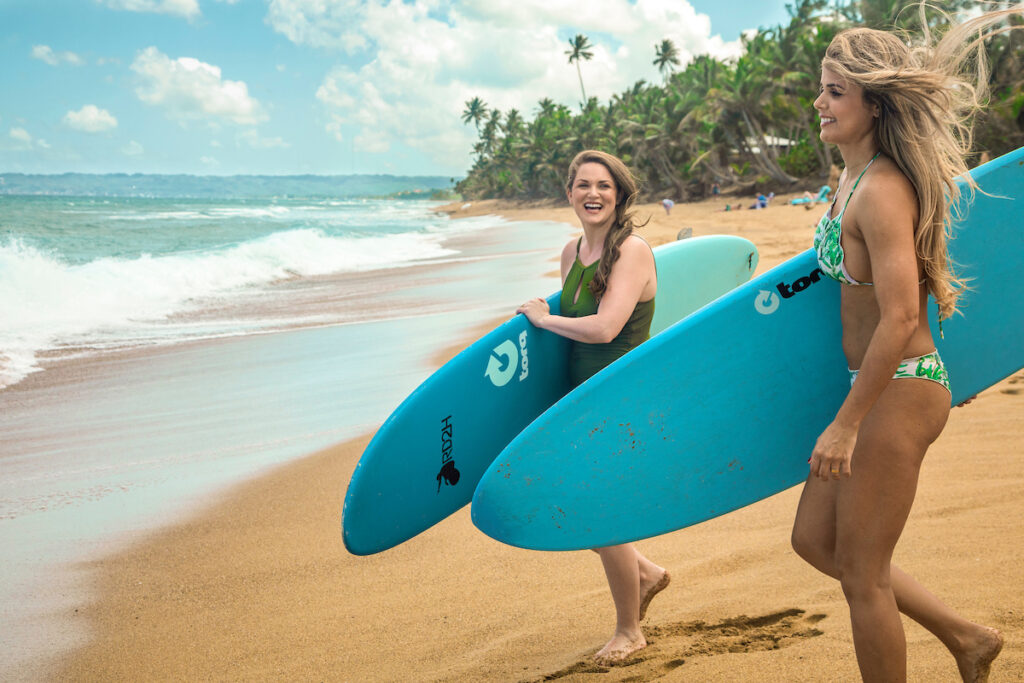
Surfing
The West Coast beaches around Isabela and Rincón have quite rightly earned the moniker of the “Surf Capital of the Caribbean.” Surfers of all stripes are drawn to the area’s consistent swells, diverse breaks and laid-back vibe. San Juan is where surfing began in Puerto Rico and it still holds magnetic appeal to both families and more seasoned wave riders. Locals keep the best spots to themselves—which is where we come in.
Rincón
During the peak winter season, surfers of all levels are drawn to Rincón’s consistent waves and lauded diversity; you’ll always find dramatic swells at one beach or another. Kelly Slater has regularly surfed fabled spots such as Domes Beach—host to major surf competitions—Pools, Dogman’s Beach and Tres Palmas (also known as Step’s Beach)—recommended only for advanced and expert surfers. Experienced boarders can also check out Rincón Point, famed for its predictable waves all season long and distinct surfing locations (The Cove, Rivermouth and Indicator). When the waves are smaller, beginners and intermediates can head to María’s Beach for long, clean rides. There are many surf schools in Rincón where you can rent a board or sign up for classes.
“Early morning is always the best time to surf, but when the conditions are right, few things in life can compare to watching the sunset on your board at María’s Beach.” – Oscar Cullen López.
Isabela
Isabela provides ample opportunities for experienced and novice surfers. Easy to access, Jobos is the best multilevel surfing beach and has an intense right break in north or northeast swells. The low-key scene centers on a clutch of beachfront bars and restaurants. Middles Beach is the site of the Corona Pro Surf Circuit and, not surprisingly, a world-class surfing destination. Consistent fast and hollow reef breaks crash across a swathe of scenic shoreline. It’s accessible and quiet during the week.
Aguadilla
In Aguadilla, Crash Boat Beach is a terrific option for intermediate surfers. What it lacks in consistency it more than makes up for in its spectacular scenery and fun-loving vibe. Wilderness and Gas Chamber beaches are recommended for advanced surfers only, with fast and powerful barrel waves often exceeding 18 feet (5m). Surfer’s Beach offers prime conditions for beginner and intermediate surfers with consistent long right breaks.
San Juan
In the Metro area, Escambrón Beach marries picture-perfect aesthetics with (generally) rewarding surf. A fair amount of paddling is required to reach the consistent middle-to-large waves. Just outside Old San Juan, La Ocho (named after its bus stop, the 8th) has some of the largest swells—locals claim that the left side is the best. Beginners should head to Pine Grove in Isla Verde, known for its small and steady waves. An island reef protects the beach from strong trade winds, making it ideal for families. Around 40 minutes from San Juan, in Luquillo, La Pared is one of the Caribbean’s best sites for novice surfers, year round.
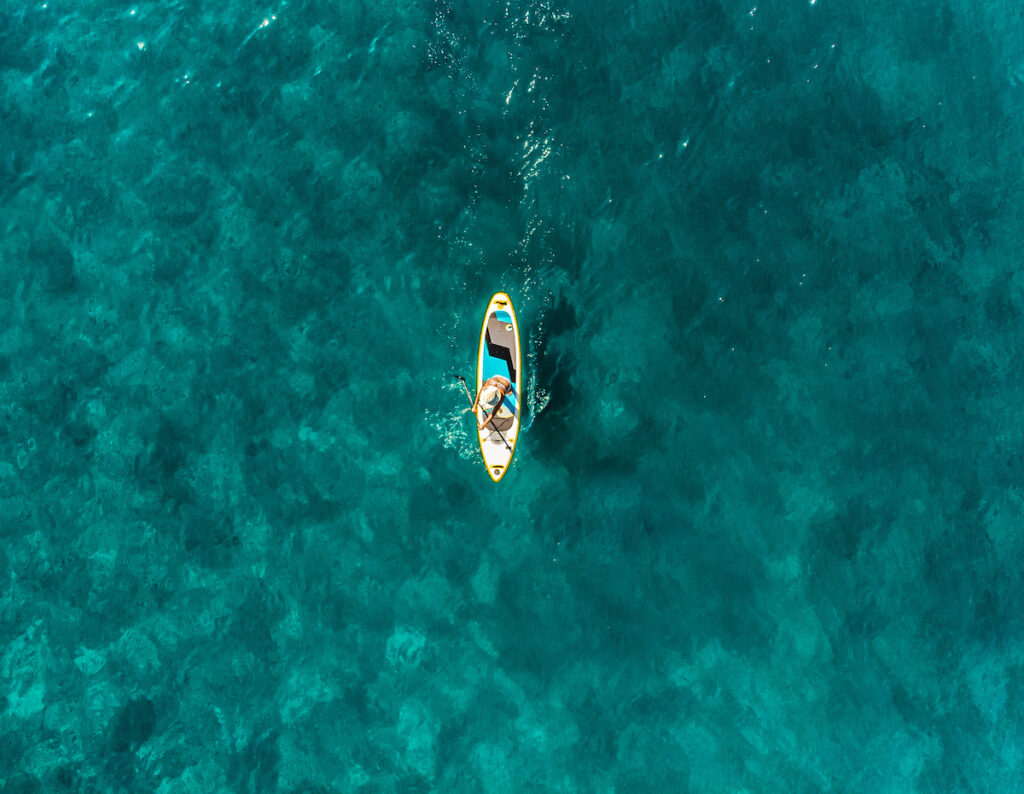
Paddleboarding
Sheltered coves, mangrove-fringed lagoons and reef-protected beaches make Puerto Rico an ideal destination to try one of the most popular water sports activities—stand-up paddleboarding (SUP). In San Juan, Condado’s centerpiece lagoon is a haven for outdoor recreation. With placid, warm waters all year round, locals and visitors flock here on the weekend to kayak and paddleboard. Surrounded by mangroves, the lagoon is part of the San Juan Estuary and a protected nature reserve. It’s not unusual to spot manatees, turtles, stingrays and turtles. At Velauno Paddle Board you can rent paddleboards for $20, sign up for a 90-minute lesson ($75) or a 3-hour cruise tour ($99). On Vieques, a short walk from Esperanza, Sun Bay Beach has the most amenities on the island, including paddleboards and kayaks to rent. Seven Seas Beach in Fajardo is perfect for beginners with clear, tranquil waters. Rent paddleboards and kayaks at the Pirate Snorkeling Shack ($20 per hour).
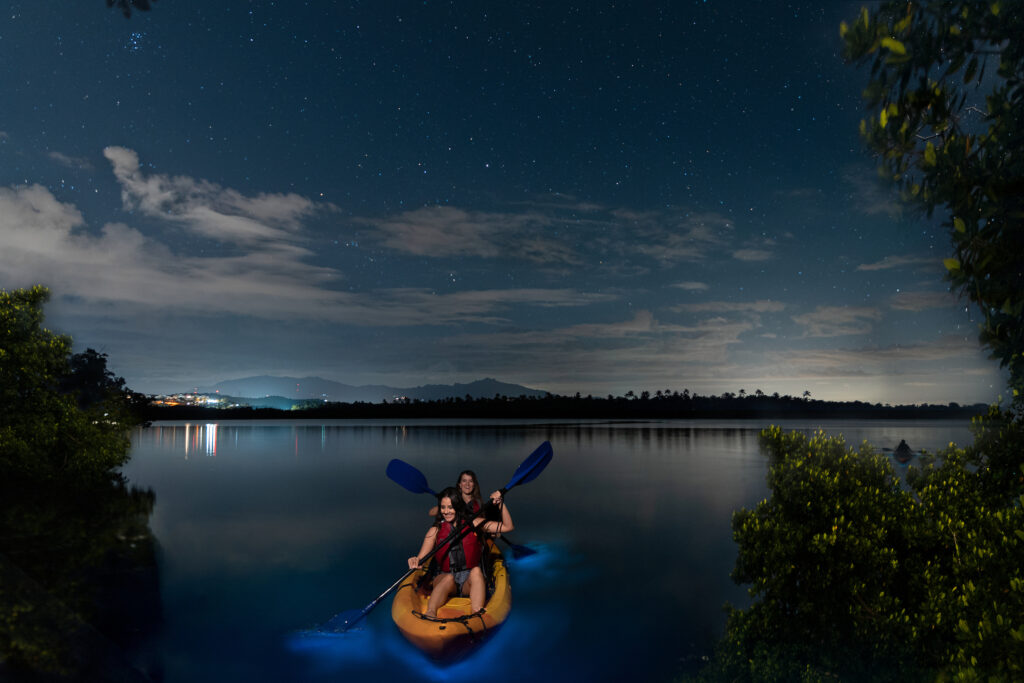
Kayaking
Kayaking excursions to one Puerto Rico’s three bioluminescent bays—Vieques, Laguna Grande and La Parguera—provide an exhilarating close encounter with this rare biochemical emission of light. Each ripple caused by either the oar or a hand skimming the water ignites magical fluorescent-blue sparkles below the surface.
To access Puerto Rico’s bio bays via kayak or paddleboard, you’ll need to paddle through dark mangrove channels—we recommend that you sign up with a recommended tour operator. Most tour companies operate two tours each night, at sunset and 9pm. Tandem kayaks—the most common vessel—allow for a unique family-friendly experience; most operators specify a minimum age of six years to participate. Kayaks are generally towed out to the lagoon. The channels are protected by outer reefs and mangroves so you can expect calm conditions with no currents.
Opportunities to experience water sports in Puerto Rico are numerous and varied. Whatever Puerto Rico outdoor adventure you seek, you’ll always find something fun to explore.
Looking for more outdoor activities? Check out our list of top 10 outdoor activities in Puerto Rico.
